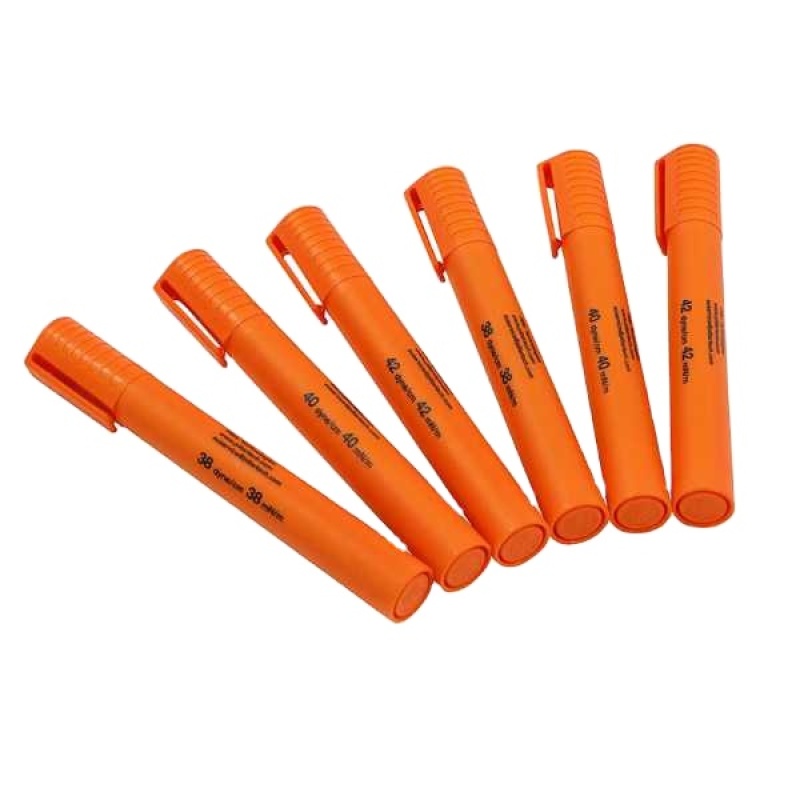
PILLAR SHERMAN ACCU A.Shine Arcotest dyne test pen dyne liqud for testing the corona treatment effectivity surface tension test adhesion test
>= 10 Piece(s)
US $35.00 ~ 60.00
Top Selling




- OVERVIEW
- SPECIFICATIONS
- OTHER
Brief Introduction
Each substance has its specific surface energy (SE) in the pure state, but this surface energy will decrease due to the appearance of impurities during production and storage. In many processes, such as gluing, coating and printing, the surface can play a very important role, which determines the adhesion and moisture The measurement unit of surface energy SE is: dyne (mN/m, dynes/cm) When the measured material is compared with liquid or polymer melt, the surface energy value of the measured material can be determined only indirectly according to the contact angle. Therefore, in this case, the test solution with specific surface energy can be applied to the material surface to determine the material surface energy.


dyne pen, also known as surface tension test pen, corona treatment pen, and plastic film surface tension test pen. It is a testing tool for film surface corona degree (dyne), which is specially used to determine the effect of film after corona treatment. It can accurately test whether the surface free energy of film, plastic, ceramic, semiconductor, glass fiber, etc. reaches the value of dyne pen, and can also test whether the result of surface corona treatment meets the requirements. It can quickly and intuitively detect whether the material is suitable for printing, laminating or vacuum aluminizing, so as to effectively control the quality and reduce the loss caused by unqualified materials. Dyne pen and Dyne liquid are available in various specifications. The conventional dyne value is the double number of 28~72 dyne, and other dyne values are special numbers because they are not commonly used, and generally need to be ordered.
Dyne pens have a shelf life of 6 months after opening. If the use frequency is high or improper use causes ink evaporation and pen head pollution, the shelf life will be greatly shortened. The writing colors of Dyne's pen include blue-purple, pink and blue-green. Blue-purple mainly includes American brands FLEXART, ACCU and HEAD (both blue-purple and pink); Pink mainly includes the German arotest brand; Blue-green, mainly British SHERMAN brand.




How to use Dyne pen
1. Select an estimated pen of Dyne number.
2. Draw a straight line (5~10cm) evenly on the surface of the object to be measured.
3. After 2-3 seconds, observe whether the handwriting shrinks and condenses into water droplets. If there are shrinkage beads, change the Dyne pen with a lower value and draw a straight line until there is no shrinkage and no droplet point to determine the surface tension value of the object. If the handwriting is very smooth, change the Dyne pen with a higher value and then stroke again until the handwriting shrinks, then the Dyne pen number of the last value is the Dyne value on the surface of the measured object.

Analysis of the results of Dyne's pen
1. The drawn lines are evenly distributed without any beads, which means that the surface tension of the film is higher than the index marked on the Dyne pen, which can be printed.
2. The drawing line slowly shrinks, indicating that the surface tension of the film is slightly lower than the index marked on the Dyne pen. The printing effect is not good in this case.
3. The drawing line immediately shrinks and forms beads, which means that the surface tension of the film is very lower than the index marked by the Dyne pen. This situation cannot be printed.
Precautions for using Dyne pen
1) Keep the surface of the tested object clean
2) Don't smudge the tip of Dyne's pen
3) Do not draw lines at the same place on the surface of the measured object for many times
4) Save Dyne pen in 0~25 ℃ environment
5) Avoid skin contact with Dyne solution
6) Use Dyne pen before the shelf life
More Choices




 العربية
العربية français, langue française
français, langue française हिन्दी, हिंदी
हिन्दी, हिंदी Bahasa Indonesia
Bahasa Indonesia فارسی
فارسی Português
Português русский
русский Español
Español Afrikaans
Afrikaans




